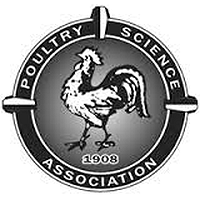Formaldehyde is commonly used to overcome contaminants introduced by hatching eggs or water supply in the hatcher cabinets. However, health risks associated with its use make economical alternatives important. This project evaluated a chlorine dioxide based product (CDBP) (0.3% concentrate) as a hatchery sanitizer in decontaminating microbial populations on the shell surface of hatching eggs (> 18 d old), as well as its impact on hatchability and chick performance. Hatchers (0.20 m2) designed to hold approximately 50 eggs and equipped with circulation fans, heaters, and thermostats were used for the evaluation. For each of the 2 trials conducted, 450 hatching eggs were obtained and incubated in a common setter. Eggs used in trial 1 were floor eggs whereas in trial 2 nest eggs were used. On d 18 of incubation, eggs were removed from the setter, and viable eggs were randomly allocated to 9 hatchers. Pre-treatment egg rinse samples (10 eggs per hatcher) were collected for initial microbial analysis. Three hatchers were treated with CDBP and 3 hatchers with a formaldehyde based product (FBP). Three untreated hatchers served as control (C). Prior to hatch, 10 eggs/incubator, not previously rinsed, were used for post treatment microbial counts. The hatched chicks were reared until d 21 in floor pens with a common starter diet. For the CDBP treated eggs, hatchability and chick performance (weight gains, mortality, and FCR on d 7 and d 21) were similar to the other treatments. The application rate of CDBP evaluated in this study was not an effective antimicrobial alternative to formaldehyde for sanitizing hatching eggs in hatcher cabinets prior to hatch.

Evaluation of chlorine dioxide based product as a hatchery sanitizer
Review badges
0 pre-pub reviews
0 post-pub reviews